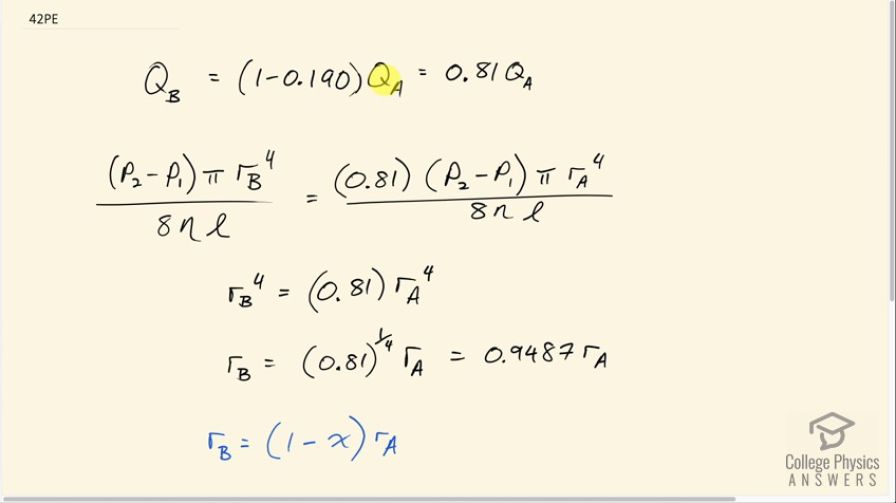Question
(a) Verify that a 19.0% decrease in laminar flow through a tube is caused by a 5.00% decrease in radius, assuming that all other factors remain constant, as stated in the text. (b) What increase in flow is obtained from a 5.00% increase in radius, again assuming all other factors remain constant?
Final Answer
- 5% decrease
Solution video
OpenStax College Physics for AP® Courses, Chapter 12, Problem 42 (Problems & Exercises)

vote with a rating of
votes with an average rating of
.
Calculator Screenshots
Video Transcript
This is College Physics Answers with Shaun Dychko. The flow rate in scenario ‘B’ is 19 percent less than the flow rate in scenario ‘A’. So we have 0.81 times Q A is Q B where one minus this 19 percent expresses the decimal is 0.81. So these factors Q are from Perseus law and so I'm substituting the pressure difference times pi times the radius of the tube in scenario ‘B’ to the power four divided by eight times the viscosity of the fluid flowing through the tube times the tube length and the l the new and the pressure difference do not get subscript ‘B’ on them because of the same in both scenarios. The only thing that's changing is the radius and so the radius gets a subscript ‘A’ over here and it gets subscript ‘B’ over here and everything else does not get a subscript because of the same factors. Now I've also written up 0.81 here because this is a Q A is all of this here and it's being multiplied by 0.81. Okay, then that means these common factors are going to cancel on both sides. You multiply and divide by them such that they are cancelling on both sides and you have r B to the power four is 0.81 times r A to the power 4. And so we take the fourth root of both sides here which is the same as raising the exponent one quarter and you get r B is 0.81 to the one quarter times r A which is 0.9487 times r A. And so we want to know by what percentage has this radius ‘B’ been reduced compared to radius ‘A’. And so we want to know what this x is in here in this bracket. So r B is, is one minus the factor by which the radius is reduced times r A. And so this means one minus x is this thing. So one minus x is 0.9487 in which case x is one minus that which is 0.0513 which express as a percent is five percent. So we verified that radius ‘B’ given a 19 percent reduction in volume flow rate is a five percent decreased radius.
